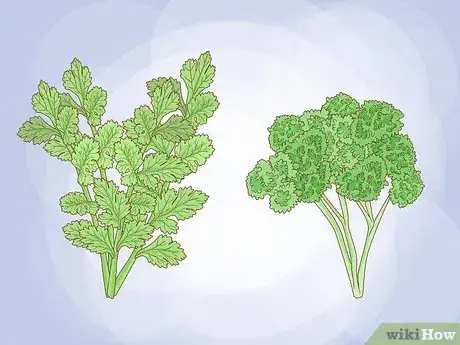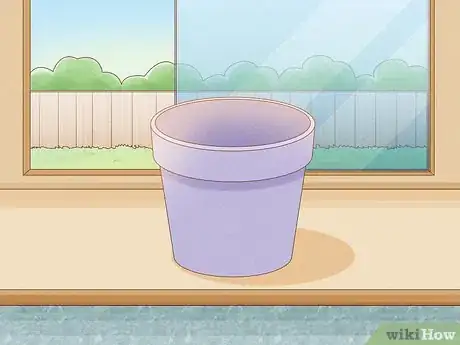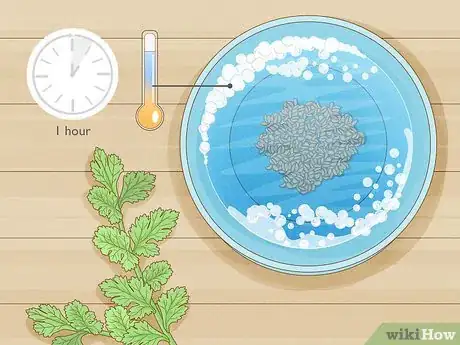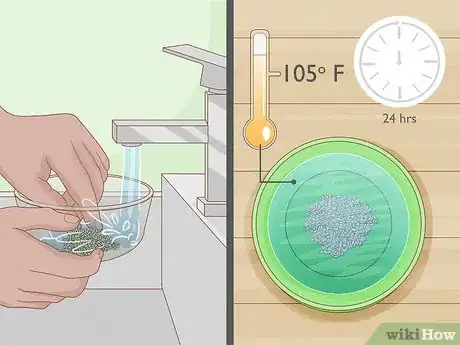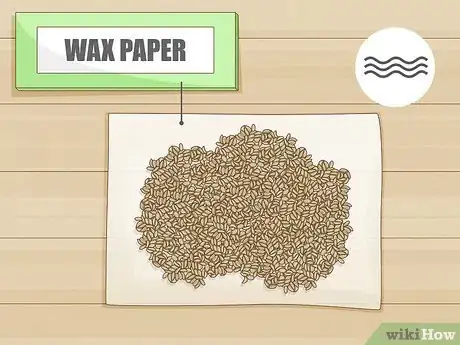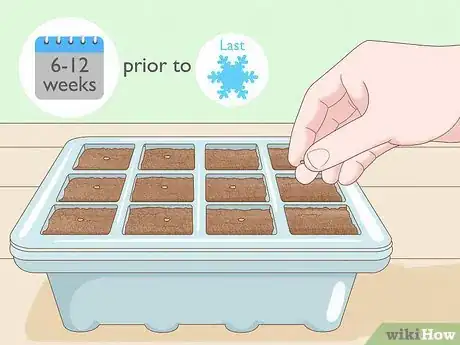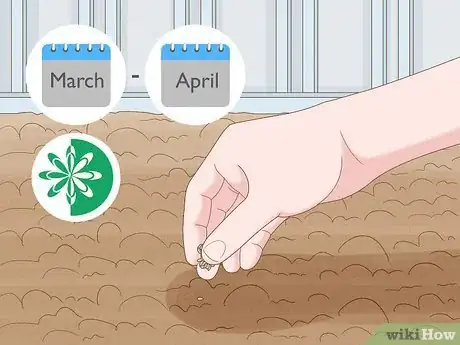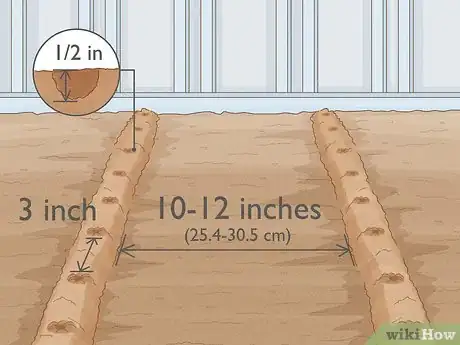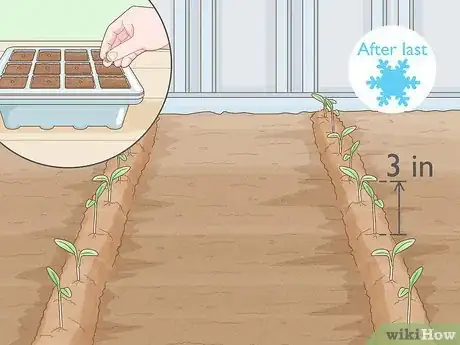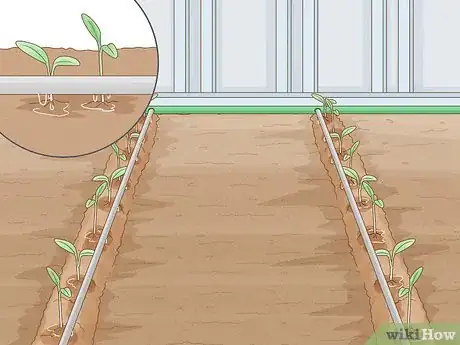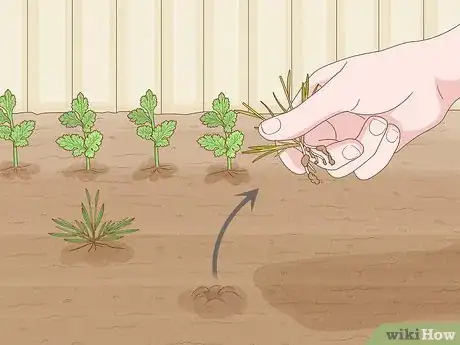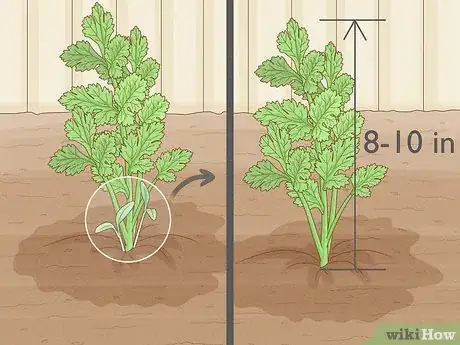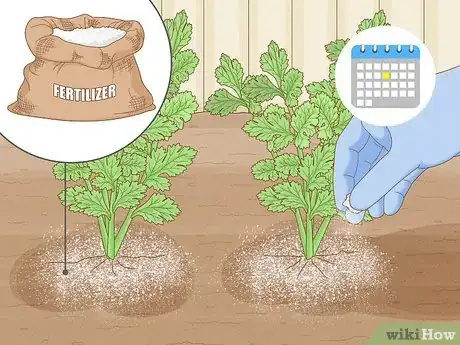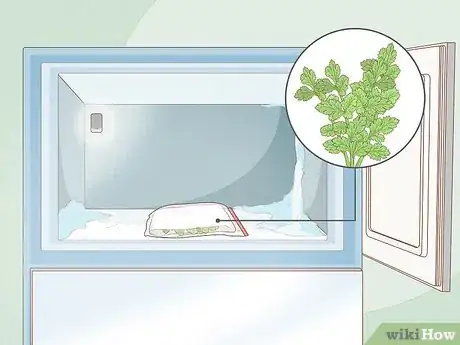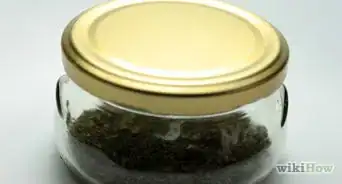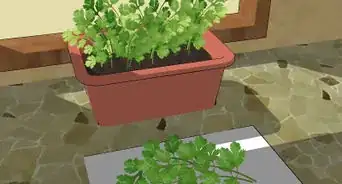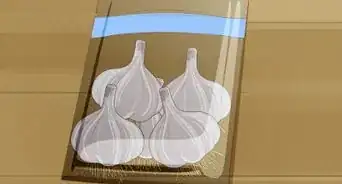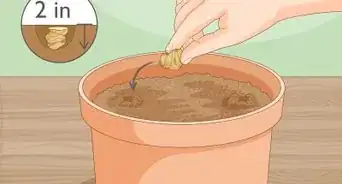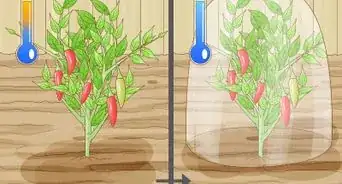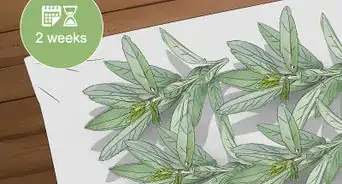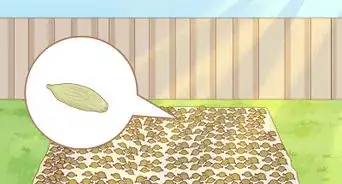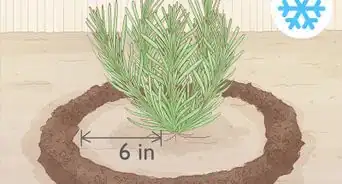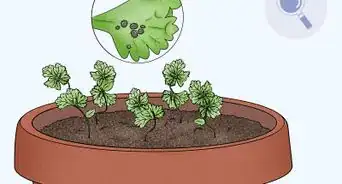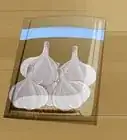This article was co-authored by Andrew Carberry, MPH. Andrew Carberry is a Food Systems Expert and the Senior Program Associate at the Wallace Centere at Winrock International in Little Rock, Arkansas. He has worked in food systems since 2008 and has experience working on farm-to-school projects, food safety programs, and working with local and state coalitions in Arkansas. He is a graduate of the College of William and Mary and holds a Masters degree in public health and nutrition from the University of Tennessee.
wikiHow marks an article as reader-approved once it receives enough positive feedback. This article has 13 testimonials from our readers, earning it our reader-approved status.
This article has been viewed 383,031 times.
Parsley is a popular herb used for flavoring many dishes, and it is commonly seen on plates as a garnish. Known for its ability to neutralize bad breath, you can chew on the sprig of parsley garnishing your plate after your meal to freshen your breath. Parsley is an easy-to-grow biennial plant in mild climates, and an annual in cold climates.
Steps
Preparing for Planting
-
1Choose a type of parsley. Parsley comes in two general varieties: curly leaf and flat leaf (also known as Italian parsley). Flat leaf parsley tends to have a slightly stronger flavor than that of curly-leaf parsley, but both types are relatively mild. You will also need to decide if you want to grow your parsley from seed, or if you will grow the plant from a start/potted version.
-
2Select a location. Parsley works well in any garden or pot, as it doesn’t have strict growing conditions under which it thrives. Choose an area that gets at least partial sunlight, either in its own plot or between other garden plants. If you decide to pot your parsley, place it on a windowsill that gets morning sunlight, such as on an eastern-facing windowsill.Advertisement
-
3Prepare the soil. Soil that is relatively loose, full of compost/nutrients, and has a pH level between 6 and 7 is perfect for parsley. Test the pH of the soil, and incorporate peat moss into it if the soil is too basic. To create the perfect soil mixture, mix 50% potting soil with 50% compost for nutrients. This will create a light and airy soil mixture that will make it easier for the small root-system of the parsley to attach itself to.[1]
Propagating the Seeds
-
1Soak the seeds in soapy water. Fill a large cup or bowl with warm (not hot) water. Add a splash of dish soap, and stir the mixture to help it to dissolve. Place all of your parsley seeds into the mixture and allow them to soak for one hour. The heat of the water and the dish soap will help to break down the notoriously tough outer casing of the parsley seeds, helping them to grow faster than they would without soaking.
-
2Rinse and move the seeds to another bowl of water. Using a small strainer, pour the soapy water out and run the seeds under lukewarm water. This should remove any traces of the soap, and prepare them for the next step. Fill a bowl with very warm water (near 105 degrees Fahrenheit) and place the seeds in the water. Leave these to soak overnight to continue the germination process.
-
3Dry the seeds. After 24 hours soaking in the water, remove the seeds with a strainer and lay them out on a piece of wax paper to dry. When they have been fully dried, they are ready to be planted.
-
4Start your seeds indoors. If you want to speed up your planting time even further, you can plant your parsley ahead of time in small containers and move them to their final destination after sprouting. 6-12 weeks prior to the last frost before Spring, plant your parsley seeds into small containers and water them daily. This should give them enough time to begin sprouting, increasing their time to full bloom when planted outdoors or in a larger pot.[2]
Planting the Seeds
-
1Plant at the right time. Wait until all possibility of frost has passed and sow the seeds directly in the garden if you did not start them indoors. Typically, the seeds should be planted at the very beginning of Spring, around March or April.
-
2Dig your holes/rows. Using a small trowel, make the rows in your garden approximately 10 to 12 inches (25.4 to 30.5 cm) apart and long enough so that the seeds can be sewn in 3-inch intervals. The seeds/sprouts need only be covered with ½ inch of dirt, so these holes/rows need not be very deep.
-
3Plant outside. Transplant seedlings started indoors into your garden after the last frost and when the plants are at least 3-inches tall. Place the seeds so that each plant is at least 8 to 10 inches from the other plants, in rows that are 6 inches (15.2 cm) apart. This will give the parsley plenty of space to grow, which it will take full advantage of with the commencement of late Spring.
-
4Water the parsley. Water your parsley deeply at least once a week to encourage the development of a long taproot. You may need to water more frequently during extremely hot and dry periods. If you’re planting your parsley in pots indoors, give them enough water so that the soil is just barely moist. Consider setting up a drip system if you’re unable to water the parsley regularly.[3]
-
5Keep weeds at bay. Weeds can easily blend in with the parsley, but they take up valuable nutrients and block out sunlight. Mulch around the plants to help the soil retain its moisture and discourage weed growth. Further, pull any weeds on sight and dispose of them far away from your garden.
-
6Thin out the parsley plants. Along the way, seedlings will need to be thinned out so that there is only one plant every 8 to 10 inches. Once the seeds start to develop into plants, go through with a pair of scissors and snip out some of the smaller or less healthy looking plants right down to the soil. If you want to transplant these seedlings to a different location, then you can carefully dig them up using a small spade.[4]
-
7Continue adding nutrients. Fertilize the parsley once a month using a general purpose fertilizer to sustain production of the herb for the entire season. You can also add compost to the soil to help keep it full of nutrients, giving your parsley an extra boost.
-
8Harvest the parsley. When the parsley sprouts out with sets of three leaves that are fully developed, it is ready to be picked. Harvest the parsley slowly throughout the season by cutting the outer stalks of the plants just above ground level to encourage additional growth. Harvesting the leaves from the top of the plant will reduce your yield.
-
9Freeze the leaves for later use, or dry them and store them in airtight containers. Use your stored parsley within a year for optimal flavor.
Expert Q&A
Did you know you can get premium answers for this article?
Unlock premium answers by supporting wikiHow
-
QuestionWhy is my parsley is always seeding?
 Andrew Carberry, MPHAndrew Carberry is a Food Systems Expert and the Senior Program Associate at the Wallace Centere at Winrock International in Little Rock, Arkansas. He has worked in food systems since 2008 and has experience working on farm-to-school projects, food safety programs, and working with local and state coalitions in Arkansas. He is a graduate of the College of William and Mary and holds a Masters degree in public health and nutrition from the University of Tennessee.
Andrew Carberry, MPHAndrew Carberry is a Food Systems Expert and the Senior Program Associate at the Wallace Centere at Winrock International in Little Rock, Arkansas. He has worked in food systems since 2008 and has experience working on farm-to-school projects, food safety programs, and working with local and state coalitions in Arkansas. He is a graduate of the College of William and Mary and holds a Masters degree in public health and nutrition from the University of Tennessee.
Food Systems Expert
-
QuestionHow tall does curly leaf parsley grow to be?
 Andrew Carberry, MPHAndrew Carberry is a Food Systems Expert and the Senior Program Associate at the Wallace Centere at Winrock International in Little Rock, Arkansas. He has worked in food systems since 2008 and has experience working on farm-to-school projects, food safety programs, and working with local and state coalitions in Arkansas. He is a graduate of the College of William and Mary and holds a Masters degree in public health and nutrition from the University of Tennessee.
Andrew Carberry, MPHAndrew Carberry is a Food Systems Expert and the Senior Program Associate at the Wallace Centere at Winrock International in Little Rock, Arkansas. He has worked in food systems since 2008 and has experience working on farm-to-school projects, food safety programs, and working with local and state coalitions in Arkansas. He is a graduate of the College of William and Mary and holds a Masters degree in public health and nutrition from the University of Tennessee.
Food Systems Expert
-
QuestionHow close together can I plant several parsley plants?
 wikiHow Staff EditorThis answer was written by one of our trained team of researchers who validated it for accuracy and comprehensiveness.
wikiHow Staff EditorThis answer was written by one of our trained team of researchers who validated it for accuracy and comprehensiveness.
Staff Answer wikiHow Staff EditorStaff Answer
wikiHow Staff EditorStaff Answer
Warnings
- If your parsley flowers, the plant is done producing flavorful leaves and should be pulled.⧼thumbs_response⧽
- Hot, dry weather may cause your parsley plants to turn brown. If this happens cut the plants back, removing any dead plant matter, and water them generously.⧼thumbs_response⧽
References
About This Article
To grow parsley, start by soaking some parsley seeds in warm, soapy water for an hour and then transferring them to a bowl of clean warm water to sit overnight. Then, dry the seeds and plant them outdoors or in an indoor pot. Regardless of where you plant them, make sure your parsley is in a spot that gets at least partial sun during the day. Water your parsley deeply once a week and pull up any weeds that sprout. Once it has sets of 3 leaves, your parsley is ready to be harvested. To learn how to fertilize parsley, scroll down!
